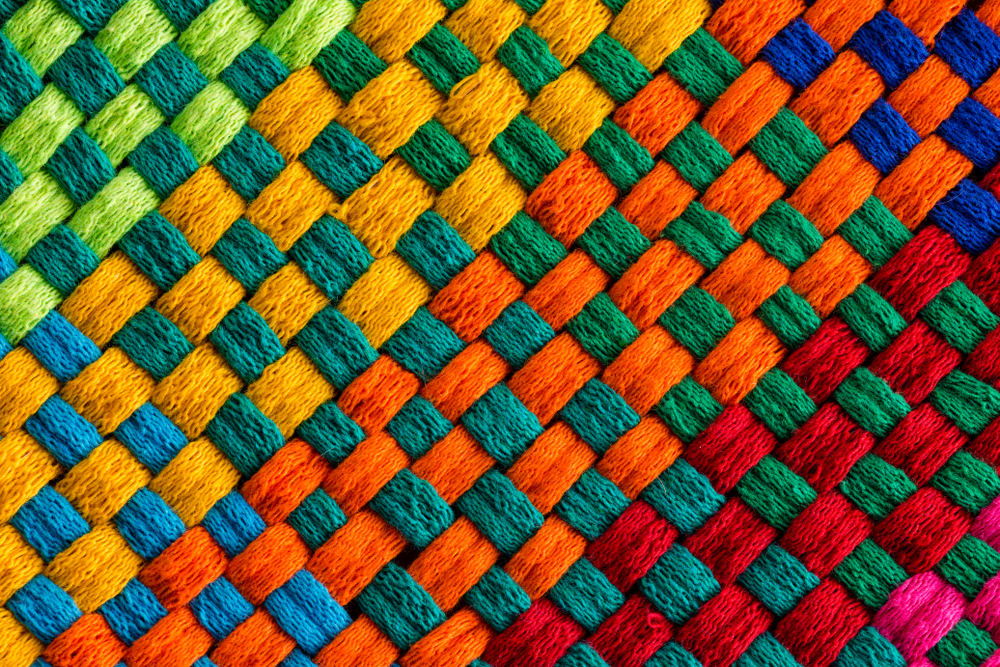Woven fabric holds a significant place in the textile industry, offering a wide range of applications and versatility. From clothing to home decor, understanding the properties and uses of woven fabric can help you make informed decisions when it comes to choosing the right material for your needs. In this comprehensive guide, we will delve into the world of woven fabric, exploring its characteristics, different types, and various applications.
Properties of Woven Fabric:
Using woven fabric can benefit you and your lifestyle thanks to its properties:
Durability
Woven fabric is created by interlacing two sets of yarns, namely the warp and the weft, at right angles to each other. This interlacing technique gives you a distinct crisscross pattern and results in several key properties. One of the standout properties is its durability. The tight interlacing of yarns makes them less prone to tearing or fraying compared to other types of fabric. This durability also gives it a longer lifespan, making it ideal for items that undergo frequent use or washing.
Strength
Strength is another essential property of woven fabric. The intertwining of yarns strengthens the fabric, offering resistance against stretching and tearing. This property makes it a popular choice for items that require structural integrity, such as upholstery, curtains, and bags. Additionally, woven fabric provides remarkable stability, maintaining its shape even after repeated use and washing. This stability ensures that clothing items and home textiles retain their original fit and appearance over time.
Breathability
Breathability is a desirable characteristic of woven fabric. The interlacing of yarns creates small gaps or pores between the threads, enabling air circulation. This breathability allows for better moisture management and temperature regulation, making it comfortable to wear in various climates. It also contributes to the fabric’s ability to wick away moisture, making it suitable for activewear and other performance-oriented applications.
Color Retention
Woven fabric exhibits excellent color retention, making it an ideal choice for dyeing and printing. The structure of the fabric allows for even distribution and absorption of dyes, resulting in vibrant and long-lasting colors. This quality is particularly crucial for fashion items and home decor, where aesthetics play a significant role.
Types of Woven Fabric:
There are various types of woven fabric, each with its own unique characteristics and specific weaving techniques. The most common types include plain weave, twill weave, satin weave, and dobby weave.
Plain Weave:
Plain weave is the simplest and most common interlacing pattern in woven fabric. In this pattern, the warp and weft threads alternate over and under each other, creating a balanced and strong fabric. Examples of plain weave fabrics include cotton, linen, and calico. Plain weave is versatile and is used in a wide range of applications, such as dress shirts, bed linens, and tablecloths.
Twill Weave:
Twill weave is characterized by a diagonal line pattern on the fabric surface. The weft yarns pass over multiple warp yarns in a regular pattern, creating a distinctive twill line. Twill weave fabrics have excellent drapes and are known for their durability and resistance to wrinkles. Denim, gabardine, and herringbone are popular examples of twill weave fabrics.
Satin Weave:
Satin weave produces a smooth and lustrous fabric with a glossy surface. Unlike plain and twill weave, satin weave has fewer interlacings, allowing the yarns to float on the fabric surface. This creates a luxurious shine and a soft, silky texture. Satin is commonly made from silk, although synthetic fibers like polyester can also be used. Satin fabric is often used in evening gowns, lingerie, and luxury bedding.
Dobby Weave:
Dobby weave involves the use of small geometric patterns or motifs created by extra warp or weft threads. These additional threads create a textured or patterned effect on the fabric surface. Dobby weave fabrics offer versatility and interesting design possibilities. Examples include jacquard, seersucker, and piqué fabrics.
How to Care for Woven Fabric:
To ensure the longevity of woven fabric, proper care practices are essential. While washing instructions may vary depending on the specific type of fabric, there are general guidelines to follow. Always check for any care labels provided with the fabric, as they provide specific instructions. In most cases, it’s advisable to use mild detergent and avoid excessive agitation. Machine washing on a gentle cycle or hand washing is usually suitable for woven fabrics. For delicate or luxury fabrics, dry cleaning may be recommended.
Proper storage is also crucial to maintain the fabric’s integrity. It’s advisable to keep woven fabric in a cool, dry place away from direct sunlight, as prolonged exposure to sunlight can lead to color fading or fabric degradation. Additionally, avoid storing woven fabrics in plastic bags, as this can trap moisture and lead to mildew or mold growth. Instead, use breathable fabric storage bags or boxes.
Uses of Woven Fabric:
Woven fabric finds application in a wide range of industries and products due to its diverse properties. In the fashion industry, it is one of the most commonly used fabrics for clothing items such as shirts, pants, dresses, skirts, and suits. Woven fabric provides comfort, durability, and style. Its versatility allows for various design possibilities, making it suitable for a wide range of fashion styles and trends.
Home textiles and decor also heavily rely on woven fabric. Curtains, upholstery, drapes, and bed linens often feature this kind of fabric due to its durability, stability, and aesthetic appeal. Fabric with different patterns, colors, and textures can help create a desired ambiance or style in interior design.
Beyond fashion and home decor, woven fabric plays a significant role in industries such as automotive, aerospace, and construction. Its durability, strength, and resistance to abrasion make it an ideal choice for car seat upholstery, interior paneling, and aircraft interiors. Additionally, It is used in the construction of tents, awnings, and outdoor furniture due to its weather resistance and longevity.
Conclusion:
Woven fabric offers numerous advantages and applications, making it a widely used material in the textile industry. Its properties, including durability, strength, breathability, color retention, and stability, make it suitable for various industries and products. Understanding the different types of woven fabric and how to properly care for it allows you to make informed choices when selecting materials for your projects. Whether you are creating fashionable garments, designing home decor items, or working on industrial applications, It provides the quality, functionality, and versatility you need.

